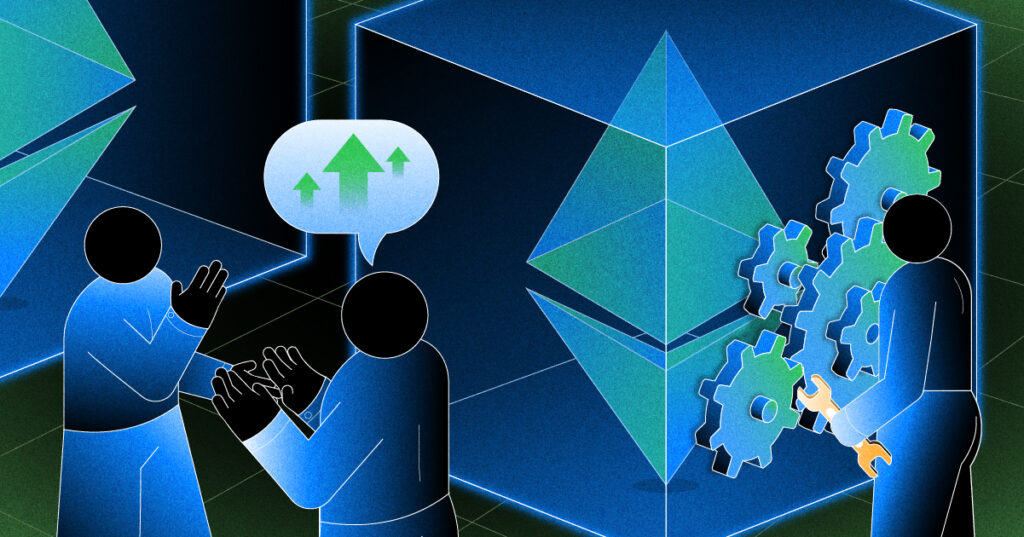Ethereum Scaling Explained

Ethereum, the second-largest cryptocurrency by market capitalization, has revolutionized the blockchain industry with its smart contract functionality. However, as its popularity surged, so did concerns about scalability. Ethereum scaling refers to the implementation of various techniques and solutions to improve the network’s performance, increase transaction throughput, reduce fees, and enable the platform to handle a higher volume of users and applications. This article explores the challenges associated with Ethereum’s scalability, the proposed solutions, and the potential impact on the future of decentralized applications (dApps) and blockchain technology.
The Scalability Challenge
Scalability is a critical aspect of any blockchain platform, as it determines its ability to handle a large number of transactions simultaneously. Ethereum’s scalability challenge stems from its original design, which relies on a consensus mechanism called Proof of Work (PoW). PoW requires extensive computational resources and suffers from limited transaction throughput, resulting in congestion and high fees during periods of high demand.
The growing popularity of decentralized applications built on Ethereum, such as decentralized finance (DeFi) protocols, further exacerbates these scalability concerns. As more users and applications join the network, the limitations become more apparent, hindering mass adoption and inhibiting the growth of the Ethereum ecosystem.
Layer 2 Scaling Solutions
To address Ethereum’s scalability issues, several Layer 2 scaling solutions have been proposed and developed. These solutions aim to process transactions off the main Ethereum blockchain, reducing congestion and increasing scalability while maintaining the security and decentralization features of the underlying blockchain.
Here are a few prominent Layer 2 scaling solutions:
State Channels: State channels allow users to conduct off-chain transactions while ensuring the final settlement is recorded on the Ethereum blockchain. By conducting most transactions off-chain, state channels significantly reduce transaction costs and increase throughput. Examples of state channel implementations include the Raiden Network and the Connext Network.
Sidechains: Sidechains are independent blockchains that are interoperable with the main Ethereum network. They can handle a high volume of transactions and settle periodically on the Ethereum mainnet. Sidechains like Polygon (formerly Matic Network) have gained popularity due to their low fees and fast transaction times.
Plasma: Plasma is a framework that enables the creation of child chains that can process a large number of transactions. These child chains are periodically reconciled with the Ethereum mainnet, ensuring their security and immutability. While still in experimental stages, projects like OMG Network have been working on implementing Plasma-based scaling solutions.
Optimistic Rollups: Optimistic Rollups are Layer 2 solutions that bundle multiple transactions into a single transaction, reducing the load on the Ethereum network. These rollups rely on the Ethereum blockchain to settle disputes, ensuring the security of the transactions. Several projects, including Optimism and Arbitrum, have been developing Optimistic Rollup solutions.
Ethereum 2.0 and the Beacon Chain
In addition to Layer 2 solutions, Ethereum 2.0, also known as Eth2 or Serenity, represents a significant upgrade to the Ethereum network to enhance scalability, security, and sustainability. Ethereum 2.0 introduces a new consensus mechanism called Proof of Stake (PoS), replacing the energy-intensive Proof of Work.
The Eth2 upgrade has been rolled out in multiple phases, with the Beacon Chain being the first milestone. The Beacon Chain went live in December 2020 and introduced PoS to the Ethereum network. It acts as the backbone of Ethereum 2.0, coordinating validators and managing the consensus protocol. The PoS mechanism in Ethereum 2.0 enables faster block times and significantly reduces energy consumption.
The subsequent phases of Ethereum 2.0 include the introduction of shard chains, which will run in parallel to the Beacon Chain and increase the network’s capacity. Shard chains will process transactions and smart contracts independently, further improving scalability. Ethereum 2.0 aims to achieve a capacity of processing thousands of transactions per second, making it more suitable for widespread adoption and the demands of future decentralized applications. The latest development also includes Ethereum’s Shanghai Upgrade which took place roughly two months ago.
Impact on Decentralized Applications
The scalability enhancements in Ethereum will have a profound impact on the development and adoption of decentralized applications. By increasing transaction throughput and reducing fees, Ethereum scaling solutions will make dApps more accessible and user-friendly, attracting a larger user base.
The improvements in scalability will also spur innovation in various sectors, such as decentralized finance, supply chain management, gaming, and social media. Developers will be able to create complex, interactive applications without worrying about the network’s limitations. The reduced fees will also make microtransactions more viable, enabling new use cases and business models on the Ethereum platform.
Overcoming Scalability
Ethereum scaling is a crucial undertaking to overcome the scalability challenges that hinder the widespread adoption of the platform. Layer 2 scaling solutions, such as state channels, sidechains, Plasma, and Optimistic Rollups, provide interim solutions to increase transaction throughput and reduce fees. Meanwhile, Ethereum 2.0’s implementation, with its introduction of PoS and shard chains, represents a more comprehensive and long-term approach to scalability.
Disclaimer: This material is for information purposes only and does not constitute financial advice. Flipster makes no recommendations or guarantees in respect of any digital asset, product, or service.
Trading digital assets and digital asset derivatives comes with significant risk of loss due to its high price volatility, and is not suitable for all investors.